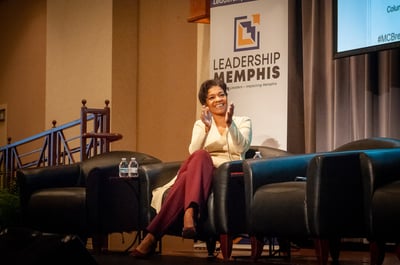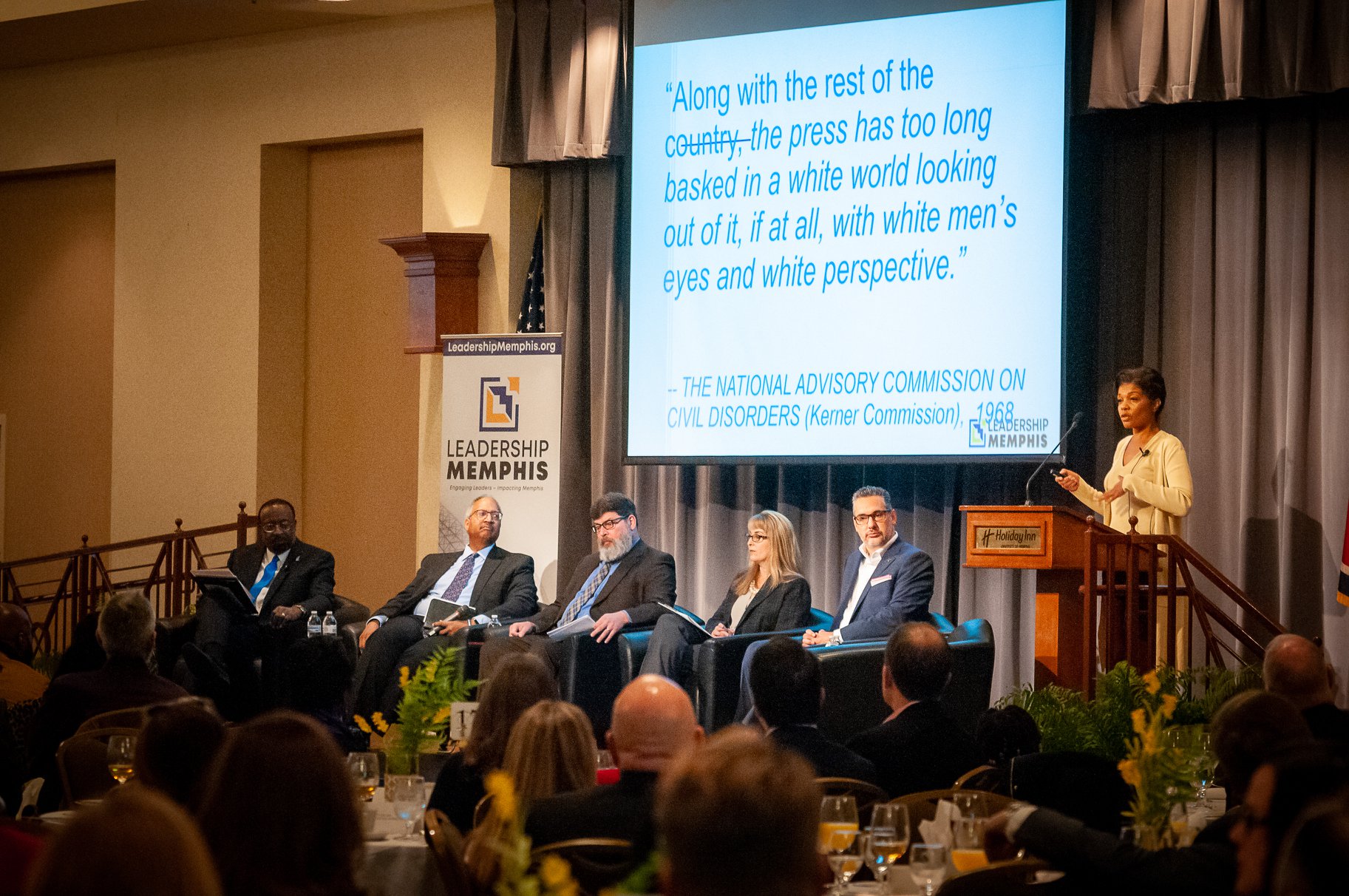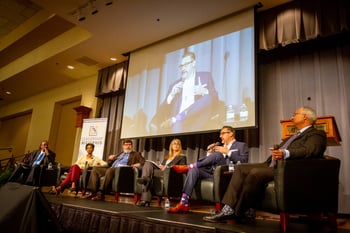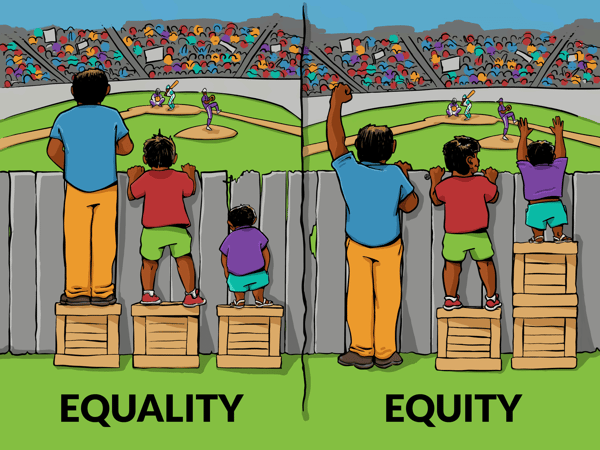Diversity, Equity and Inclusion: News and Media Shape Cultural Norms
On Friday, November 1st, hundreds of leaders in the Memphis community gathered on the University of Memphis campus for the 12th Annual Leadership Memphis Multicultural Breakfast. The panel was comprised of executive-level editors, directors, and managers of the leading news organizations based here in Memphis as well as Ruby Bailey, Executive Editor of the Columbia Missourian at the University of Missouri-Columbia. Otis Stanford, Hardin Chair of Excellence in Economic and Managerial Journalism at the University of Memphis, moderated the event.
The consensus among the panelists was clear: national and local decision-makers at news and media organizations are re-shaping the information we consume to ensure their organizations represent the community they serve. The conscious shift to ensure these organizations are inclusive and accessible to all members of our community morphs the overall communal ideals and norms on diversity, equity, and inclusion.

Bailey, who has worked as a journalist for 30 years for such papers as the Flint Journal in Michigan, Detroit News, Detroit Free Press, and The Sacramento Bee as well as covered the U.S. Navy in Operation Iraqi Freedom, presented before the panel discussion on the importance of inclusion and access. “Diversity alone does not change the questions asked, the seats filled or the stories told. Alone it is not sufficient,” stated Bailey.
Diversity = Demographics
According to Bailey, in the 1960s, there was a mandate for corporations to diversify and be more inclusive to women and minorities. This mandate sought to increase the number of women and minorities in positions of power at corporations across America - or at least to get them in the door working for these organizations. The government saw it as a moral imperative to enforce the diversification of Corporate America.
Bailey spoke on how the civil unrest rose in places across the U.S. that had massive disparity between whites and minorities. In her presentation on the topic, she cited The National Advisory Commission on Civil Disorders and their dedication to deciphering the uprise in unrest coupled with the forced government mandate to diversify. “Along with the rest of the country, the press has too long basked in a white world looking out of it, if at all, with white men’s eyes and white perspective,” stated the commission in 1968.

The media and news outlets helped to play a major role in normalizing the notions of diversity. “Television… confers status on those individuals and groups it selects for placement in the public eye, telling the viewer who and what is important to know about, think about and have feelings about,” stated the U.S. Commission on Civil Rights in their report Window Dressing on the Set: Women and Minorities in Television in 1977.
Bailey added, “The Media as a whole is so important in the way that we shape and mold identities on who we confer power to that diversity was a necessity and a moral imperative as well as an economic one.”
Diversity has morphed over the years to include more than just race, gender and ethnicity and now includes religion, geography, age, physical disabilities, and socio-economic status.
In the Memphis market, our news outlets have been almost forced into diversifying to include more minorities from across the greater Memphis geographical map and into hiring younger, less seasoned journalists.
James Overstreet, a panelist at the breakfast and Editor-in-Chief of the Daily Memphian, conferred that though the news outlet began hiring seasoned, “best-of-the-best” journalists from Memphis, he has begun to switch directions in the hiring process. His primary focus now is adding younger and more diverse professionals who can learn from the experienced staff.
Additionally, panelist and Executive Editor of the Commercial Appeal, Mark Russell was somewhat forced into diversifying, especially in age. Recently, the Commercial Appeal downsized their staff and as a result, many of the journalists that kept their jobs actually left to join the Daily Memphian staff. In order to preserve the paper, Russell knew that he would have to bring in young journalistic professionals to bring in new perspectives on stories and help improve the Commercial Appeal overall.
Inclusion = Process
In her presentation, Bright points out that
“Inclusion is a process. Inclusion is really an action. Inclusion is a conscious effort.”
By being conscious in our efforts of inclusion, it shows that we value diverse perspectives. By involving people of different backgrounds, genders and all other aspects of diversity in the decision-making process we are then empowering diversity and empowering those different perspectives.
“Inclusion, when we look at it in terms of the newsroom specifically, it is who’s at the table. It’s who’s in the room when we decide what’s a story, who’s in the room when we decide who covers the story, who’s in the room when we decide who’s a reliable, valuable source. That’s inclusion,” stated Bright.
When we think of local television news coverage, our first thought as Memphians are all the stories about crime across the city. Though these stories tend to keep us safer and out of harm’s way, they can be very discouraging to our community and how we are viewed by the national public.
Panelist Lisa Lovell, News Director for Local 24 News, conducted three focus groups over the last five years to decipher why many Memphians preferred national news outlets over the local news. The answer was a resounding, “Fewer crime stories.” Lovell went on to state that though it is impossible to remove crime reports altogether from the programming, she focused her efforts on changing how Local 24 News would report crime in the future.
In an effort to report crime more accurately and in a more inclusive way, Local 24 News has diversified its staff, reevaluated the story angle, questioned police harder on the details, suspects, and victims, and tried to include perspectives from geographically local Memphians who were personally affected by the story. Jonathan Mitchell is Vice President and General Manager of Action News 5, a panelist at the Multicultural Breakfast, and fairly new resident of Memphis. Before joining the Action News 5 team, Mitchell conducted market research on the news coverage in Memphis and saw lots of local crime stories and specifically younger black men depicted in the mugshots shown on air. Being an outsider to the Memphis community, Mitchell met with community leaders in Memphis and began to parallel those conversations internally with his Action News 5 team in an effort to be more inclusive in the conversations held regarding programming.
Jonathan Mitchell is Vice President and General Manager of Action News 5, a panelist at the Multicultural Breakfast, and fairly new resident of Memphis. Before joining the Action News 5 team, Mitchell conducted market research on the news coverage in Memphis and saw lots of local crime stories and specifically younger black men depicted in the mugshots shown on air. Being an outsider to the Memphis community, Mitchell met with community leaders in Memphis and began to parallel those conversations internally with his Action News 5 team in an effort to be more inclusive in the conversations held regarding programming.
Equity = Access
Bright began introducing equity with a powerful image that demonstrated the difference between equality and equity. With equality, everyone is given a box to stand on to better see over a fence to view a baseball game. The box allowed only two out of the three to actually view the game. With equity, the tallest person goes without a box and the shortest person is given two boxes. In the second instance, everyone is able to enjoy the game without the hindrance of the fence blocking their view.

Equity is meeting people where they are and giving them the necessary tools to achieve the same results as those with more privilege whether that privilege is height or advantages that others might have been born into such as access and exposable income to receive higher education.
When it comes to equity in the Memphis news outlets, Russell said it best in regards to the Commercial Appeal that his team of journalists could not just sit in the Downtown offices and report on those in disenfranchised neighborhoods. The new, younger journalists on Russell’s team pointed out to him that they must meet people where they are in order to truly report on the issues and people in these areas. Though the Commercial Appeal had been reporting on these neighborhoods for years, some of the people in these communities didn’t even have the access to know this outlet existed.
Bright concluded her presentation saying that diversity alone does not change the questions asked, the seats filled or the stories told. Diversity, inclusion, and equity must all work together in journalism and media in order to produce a change in the greater American cultural landscape. Diversity alone is not sufficient.
Give a Chance, Get a Powerhouse
As the panel discussion drew to a close, the executives were asked about what they are currently looking for in young professionals in place of the experience their more seasoned counterparts possess. Among the responses were a curious mindset, flexibility, dedication, and tenacity. Though not everyone possesses all of these qualifications, it is integral for any hiring professional to realize that young professionals leaving college and entering the workforce are hungry to show their capabilities.
As a recent college graduate who spent a few years after college working in the food industry to earn a living, I was finally given a chance to show off my capabilities in an organization that might have initially been hesitant given my lack of experience. Being able to finally prove myself in a field of work that I personally had a passion for meant the world to me, and I was more than dedicated to prove myself an asset.
Did I have to learn from the “seasoned” employees? Yes. Systems and processes and overall quality of work at any company is something that must be taught to any new hire - regardless of experience level. That is to be expected. On-boarding new members is a process and one that, done properly, yields more rewards for the company than could be initially thought when it comes to younger hires.
One of the benefits of hiring younger professionals is that they are less set in their ways. They have a willingness to learn because it is something they have been doing for the past 12 - 20 years of their life from elementary school through high school and sometimes even on through graduate school.
Our workforce is aging. Technology is changing at an almost lightning-fast pace. Being willing to hire young professionals is one of the best things you can do for your company. These “kids”, as you might be inclined to call them, are ready to make a difference in their communities through the work they produce for the companies willing to give them a chance. Expecting these young professionals to possess 20+ years of experience is impossible. Instead, expect them to be dedicated, tenacious, and critical thinkers and you won’t be disappointed.
Event photography courtesy of Leadership Memphis. View the full album here.
.webp?width=12693&height=4513&name=Sauce%20Logo%20Dark%20Ht%20(1).webp)

.webp?width=180&height=64&name=Sauce%20Logo%20Dark%20Ht%20(1).webp)











